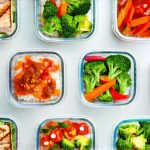Living with bladder sensitivity – whether due to Interstitial Cystic Syndrome (IC), Overactive Bladder (OAB), or simply a sensitive constitution – can significantly impact daily life. Many individuals find that seemingly innocuous habits, particularly around food and drink consumption, can trigger unwelcome symptoms like urgency, frequency, and discomfort. It’s not always about what you eat, but how you prepare and consume it that makes the difference. This article delves into subtle yet impactful food preparation habits that may help minimize bladder irritation, empowering you to regain control and enhance your quality of life. Understanding this connection isn’t about restrictive dieting; it’s about mindful choices and adapting routines to support a calmer, more comfortable existence.
The goal isn’t elimination – rarely is complete avoidance realistic or desirable. Instead, we focus on reducing potential irritants through thoughtful preparation methods that can lessen their impact. Often, the processing involved in typical food prep intensifies certain compounds that aggravate sensitive bladders. This might mean opting for fresh ingredients over pre-packaged versions, modifying cooking techniques, or even adjusting portion sizes. It’s a personalized journey requiring self-awareness and experimentation to discover what works best for you. Remember, everyone’s sensitivity threshold is different, so paying attention to your body’s signals is paramount. If you’re looking to improve bladder health overall, consider exploring holistic dietary and lifestyle adjustments.
Mindful Ingredient Selection & Preparation
The foundation of bladder-friendly food prep begins with the ingredients themselves. While a comprehensive list of potential triggers varies from person to person (and often requires an elimination diet under medical guidance), several common culprits consistently appear. Acidic foods are prime examples – citrus fruits, tomatoes, vinegar-based dressings – but it’s not just acidity that matters. The concentration of these acids and how they’re prepared plays a huge role. Fresh produce is generally more tolerable than processed versions, as processing often concentrates acidic compounds. Similarly, choosing ripe (but not overripe) fruit can reduce acidity. Consider swapping highly acidic beverages for water infused with cucumber or mint – subtle flavors that hydrate without causing irritation. Learning to identify your individual food triggers is a key step in managing your symptoms.
Beyond acidity, certain food additives and preservatives found in pre-packaged foods are notorious bladder irritants. Monosodium glutamate (MSG), artificial sweeteners, and various dyes can all contribute to discomfort. Therefore, prioritizing whole, unprocessed foods is a significant step toward minimizing exposure. When purchasing pre-made items is unavoidable, carefully scrutinize ingredient lists, opting for those with minimal additives. Learning to read labels effectively – understanding what each ingredient does and its potential impact on your bladder – empowers you to make informed choices. To further refine your grocery shopping habits, explore strategies for building bladder-friendly habits at the store.
Finally, preparation methods can drastically alter a food’s irritant potential. For example, stewing tomatoes instead of using them raw in a salad reduces their acidity through a chemical change during cooking. Similarly, soaking beans overnight before cooking helps remove compounds that cause gas and bloating, which can put pressure on the bladder. The key takeaway is: don’t underestimate the power of preparation. It’s not just what you eat, but how it’s prepared that matters most. For more detailed guidance, review helpful food preparation habits to avoid hidden triggers.
Portion Control & Meal Timing
Overeating or consuming large meals rapidly can place undue stress on the bladder and digestive system, potentially leading to urgency or discomfort. A full stomach exerts pressure on the pelvic floor muscles – those responsible for bladder control – hindering their ability to function optimally. This is why spreading your food intake throughout the day with smaller, more frequent meals is often preferable to three large ones. Think of it as giving your bladder a break between ‘loads’. This doesn’t mean you have to drastically change your eating schedule; even slightly reducing portion sizes can make a noticeable difference. Understanding how food scheduling impacts bladder control can be incredibly helpful.
Meal timing also plays a role. Eating very close to bedtime can increase nighttime urination, disrupting sleep and exacerbating bladder symptoms. Allow at least two to three hours between your last meal and bedtime to give your body time to digest and reduce the burden on your bladder overnight. Furthermore, be mindful of liquid intake alongside meals. While staying hydrated is crucial, drinking large volumes during a meal can overwhelm the bladder. Sip water throughout the day instead of gulping it down with food.
Prioritizing mindful eating – slowing down, chewing thoroughly, and savoring each bite – not only aids digestion but also allows you to better gauge your fullness cues, preventing overeating. This practice encourages a more harmonious relationship between your body and bladder, minimizing the risk of irritation. It’s about creating a sustainable lifestyle change rather than a restrictive diet.
Hydration Strategies for Bladder Calm
Staying adequately hydrated is paradoxically one of the most challenging aspects of managing bladder sensitivity. While dehydration irritates the bladder, drinking too much can lead to increased frequency and urgency. The trick lies in finding your personal sweet spot – an individualized fluid intake that supports hydration without overstimulating the bladder. This often means avoiding large gulps and spreading fluids throughout the day.
- Track your daily intake: Monitor how much you’re drinking and how it affects your symptoms.
- Prioritize water: Water is generally the most bladder-friendly option. Avoid sugary drinks, caffeine, and alcohol, which are known irritants.
- Consider timing: Reduce fluid intake a few hours before bedtime to minimize nighttime awakenings.
Experiment with different types of fluids to see what works best for you. Some individuals find that room temperature water is more tolerable than cold, while others prefer herbal teas (caffeine-free!). Listening to your body’s signals and adjusting your hydration strategy accordingly is key. Don’t aim for a specific number; aim for symptom management. You can learn more about smart rehydration strategies to support bladder health.
The Role of Cooking Methods
Certain cooking methods can either exacerbate or mitigate bladder irritation. As mentioned earlier, stewing acidic foods like tomatoes reduces their acidity through prolonged heating, making them more tolerable. Similarly, steaming vegetables preserves nutrients without adding potentially irritating fats or oils. Conversely, frying food often introduces unhealthy fats and compounds that can contribute to inflammation, which may indirectly impact bladder health.
- Steaming: Gentle and preserves nutrients.
- Baking: Avoids added fats.
- Stewing/Simmering: Reduces acidity in fruits and vegetables.
- Grilling: While flavorful, be mindful of charring, as burnt food can contain irritants.
When using spices, choose mild options and avoid those known to irritate the bladder (e.g., chili powder, cayenne pepper). Consider incorporating anti-inflammatory spices like turmeric and ginger into your cooking – they may offer some protective benefits. Remember that healthy fats are important but opt for sources like avocado or olive oil over highly processed oils.
Understanding Food Diaries & Elimination Diets
A food diary is an invaluable tool for identifying potential bladder irritants. Meticulously record everything you eat and drink, along with any associated symptoms (urgency, frequency, pain). Be specific – note portion sizes, preparation methods, and the timing of your meals. After a week or two, review your diary to identify patterns between food intake and symptom flare-ups. This information can help you pinpoint specific triggers that need to be addressed.
An elimination diet takes this process one step further. Under the guidance of a healthcare professional, you systematically remove suspected irritants from your diet for a period of time (typically 2–3 weeks) and then reintroduce them one at a time, carefully monitoring for any symptom recurrence. This allows you to definitively identify which foods are causing problems. Never attempt an elimination diet without medical supervision, as it can lead to nutritional deficiencies if not done correctly. The goal isn’t long-term restriction but rather informed choices based on your individual sensitivity.





















